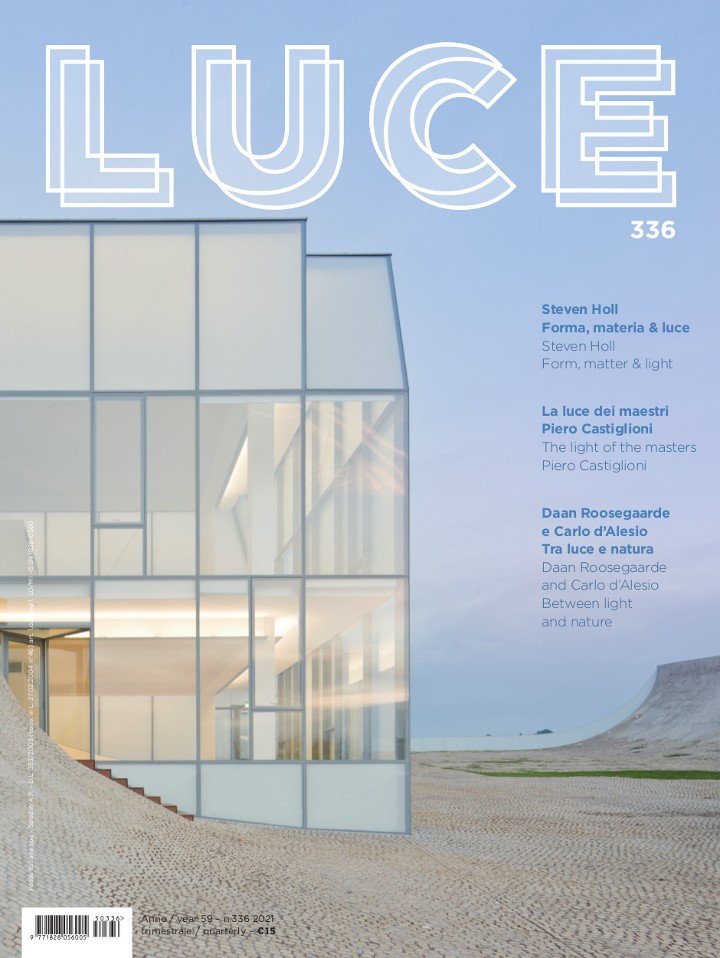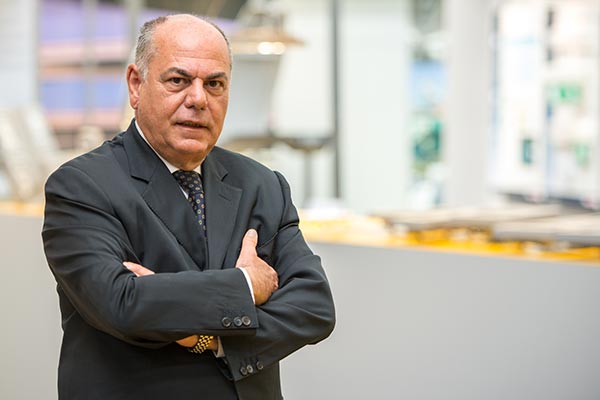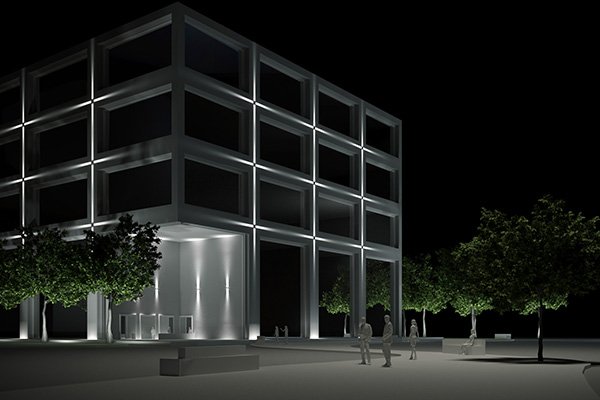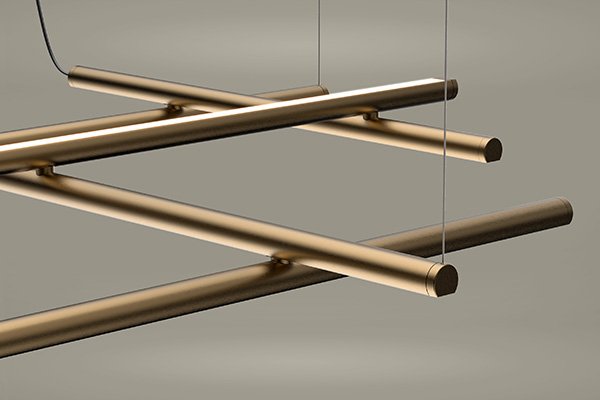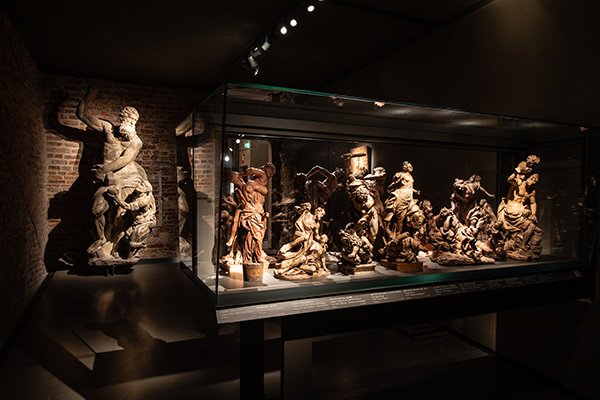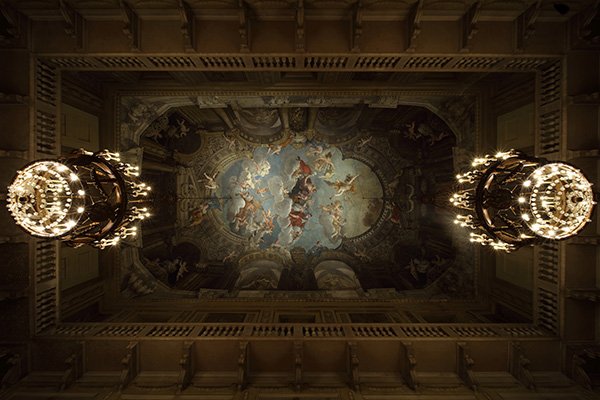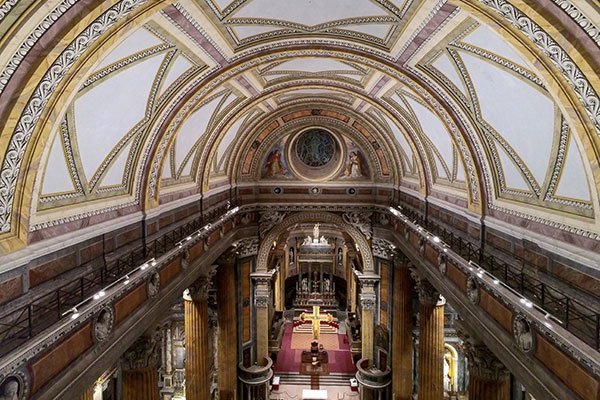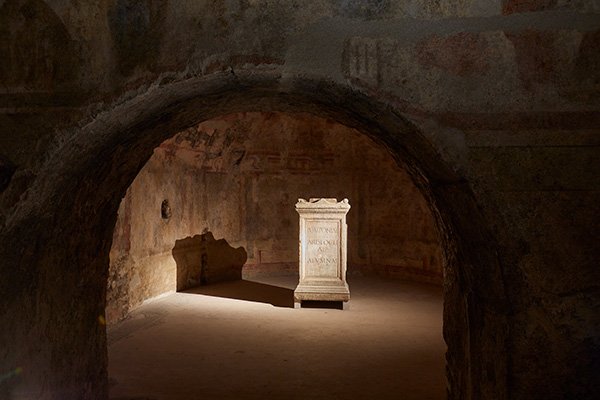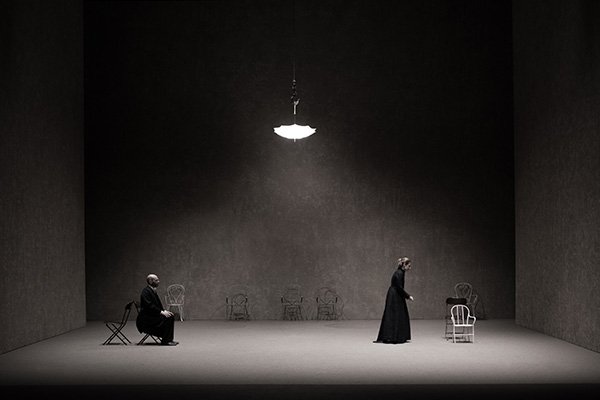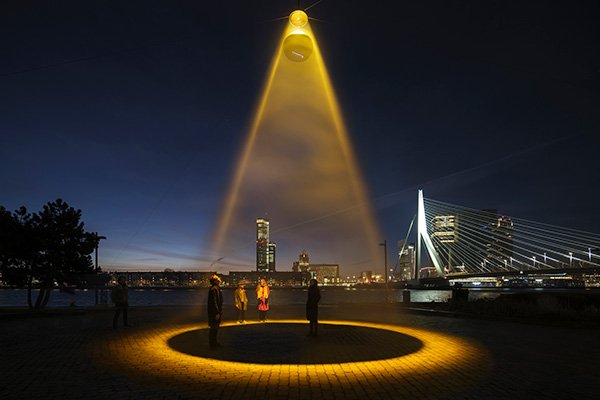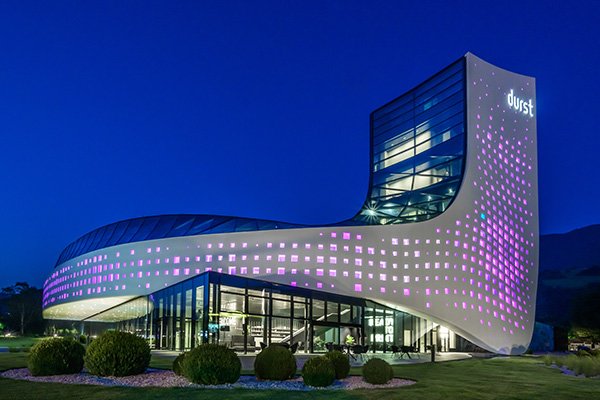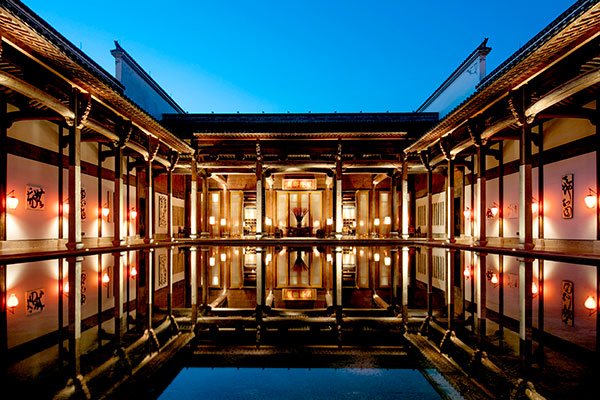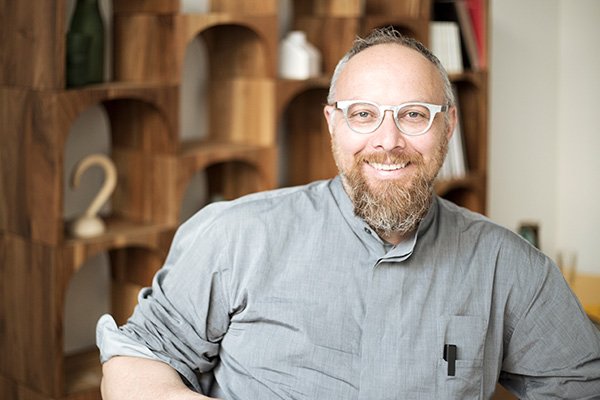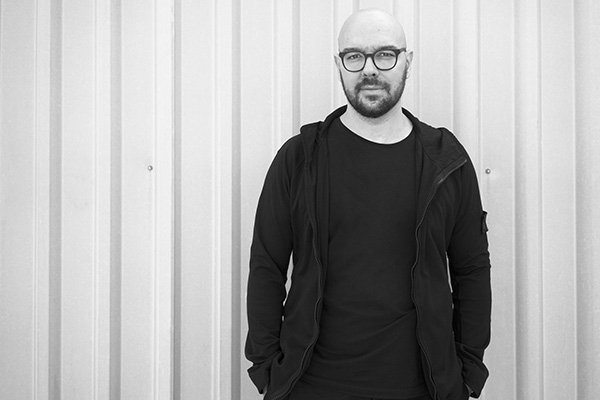LUCE 336 | PREVIEW
In this issue:
DESIGNING LIGHT
STEVEN HOLL
FORM, MATTER & LIGHT
by Alessandra Reggiani
Light and architecture are inextricably linked in the evolution of the same compositional genesis. Less obvious, however, is the interaction with artificial light, understood from the very beginning more as a functional, secondary element – a stylistic and formal “whim” – than as a substantial new expressive and communicative possibility, unable as we are to recognise its potential and qualitative, aesthetic and dialogical values. As the author writes in this in-depth, thorough research, these are concepts that emerge clearly from an analysis of a number of projects by Steven Holl, one of the most brilliant figures on the contemporary architecture scene. Fully defining this idea of light as a matter that comes together, meets and reveals itself in a succession of combinations, interactions, presences and absences, four works have been selected chronologically in a single functional category: exhibition and museum spaces. In each of them, among light, matter, space, atmosphere and emotions, there is poetry.
ASSOCIATIONS
COOPERATING FOR A STRONG AND MORE INNOVATIVE COMPANY: INTERVIEW WITH ALDO BIGATTI, NEW PRESIDENT OF ASSIL
by Silvano Oldani
Presence in LightingEurope, digitalisation, technological innovation, product quality, circular economy, greater involvement of companies in the associative debate, training, lighting designers and young people: these are the great challenges facing Italian lighting, ASSIL – founded after the war as part of ANIE and since 1995 an association – and Aldo Bigatti, its new president, who comes from a long and brilliant professional background spent entirely in the lighting sector in positions of increasing managerial responsibility. An expert in the world of associations, he has been a member of the Steering Committee of ASSIL for thirty years, and in 2018 he became Vice President with responsibility for the Market Group. A member of the Steering Committee of ANIE and UNAE, since 1988 he has been a member of the National Board of Directors of AIDI, as well as a member of the newly created Supervisory Committee of LUCE magazine. On the occasion of his election as President, he accepted to talk to LUCE, trying to explore the main issues and objectives concerning the future of ASSIL and the world of Italian lighting.
EDITORIAL
IN MEMORY OF ELEONORA FIORANI: PRESENCE AND THOUGHT
by Jacqueline Ceresoli
The 78-year-old essayist Eleonora Fiorani – whose encyclopaedic knowledge ranged from anthropology to sociology, from geography to ethnobotany and the complexity of communication – has recently left us, discreetly and silently, yet she remains in our memories. She lived in her beloved Milan, was an epistemologist, a graduate in philosophy and a student of Ludovico Geymonat. She taught at the School of Design of the Politecnico di Milano, at NABA and for years at the Milan Conservatory, where she taught philosophy. Since 2014, she has been one of the first contributors to this magazine, together with Arturo dell’Acqua Bellavitis and other friends and scholars such as Alberto Pasetti, Laura Bellia, Maurizio Rossi and the author signing her recollection of her on these pages.
LUCE’S NOTEBOOKS
EFFECTS OF ENVIRONMENT ON THE MIND
by Derek Clements-Croome
Emeritus Professor at the University of Reading and Visiting Professor at the Queen Mary University of London, the author founded and directed new Undergraduate and Postgraduate courses in Building Environmental Engineering at Loughborough University, as well as an interdisciplinary MSc course on Intelligent Buildings at Reading University. Awarded Life Membership of the International Academy of Indoor Air Sciences in 2000, he has been appointed UK Ambassador for Clima 2000 at the 7th World Congress in Naples, 2001. He researches, writes and lectures in China, Australia, New Zealand, South Africa, Poland and Finland. Some of his books have been published in Chinese and Russian. Former Commissioner for the Boroughs of Hammersmith & Fulham and Haringey and Building Environmental Expert for the Design Council, he is a CoCoordinator for the CIB Commission W098 Intelligent and Responsive Buildings and Fellow of the Building Research Establishment Academy and of the Royal Society of Medicine. He is editor for the Intelligent Buildings International Journal. In his almost poetic narrative, he explains how buildings should be a sanctuary; not merely places of safety and shelter from the elements, they should provide people with a multi-sensory experience and lift their spirits. He calls these sensory impressions Polyphony of the Senses, and architecture, as an extension of nature into the man-made realm, provides the foundation for perception through which people can learn to understand, feel and enjoy the world.
CIE ITALY
CIE Italy, the appeal of the coordinators of Divisions 2 and 3, Pietro Fiorentin and Anna Pellegrino
by Pietro Mezzi
LUCE’s journey into the world of CIE, the Commission Internationale de l’Éclairage, continues. After presenting the work of divisions 1 and 8 (LUCE 334) and 4 and 6 (LUCE 335) of CIE Italy, it is the turn of divisions 2 (Physical Measurement of Light and Radiation) and 3 (Interior Environment and Lighting Design), coordinated respectively by Pietro Fiorentin, lecturer at the Department of Industrial Engineering at the University of Padua, and Anna Pellegrino, lecturer in Environmental Technical Physics at the Politecnico di Torino. Satisfied with their working groups, motivated and competent, they explain that Italian researchers, despite the difficulties of basic research in our country, are able to produce very interesting ideas and things, “to be put at the service of the international community”.
SPECIAL REPORT
LIGHTING FIXTURES: NEW TECHNOLOGIES AND NEW PRODUCTS
by Laura Bellia and Andrea Calatroni
The pandemic has been a real “tsunami”, hitting, among others, the industrial production sector, not excluding lighting manufacturers. We asked some of Italy’s leading manufacturers a few questions to find out how they dealt with this particular period, what has changed, how they are looking to the future and how they intend to relate to the international market, on the one hand, and to designers, on the other. Giovanni Bonazzi of 3F Filippi Group, Anna Magni of Cariboni Group, Isacco Neri of Neri and Julian Rymarz of Signify took part in this second LUCE Special Report on the subject (the previous one is in issue 335).
MAKING OF
HILOW: DESIGNING SIMPLICITY
by Andrea Calatroni
The Making Of stories continue: “How is a product created?” “Who designs it?” “How is it built?” They may seem obvious questions to insiders, but the answers rarely are. Panzeri and Matteo Thun designed the Hilow lighting system, which, individually or in a formation, creates a luminous carpet on the ceiling or wall. A simple but very effective idea. This is the fourth product developed by Matteo Thun with Panzeri: after Tubino, Firefly in the sky and Venexia, also Hilow is born from the Zero Design approach that has always defined the design philosophy of the architect from Bolzano. Zero Design does not mean working within a minimalist framework per se but, on the contrary, it is about designing minimal and elegant objects, in their proportions and finishes.
PASSO: THE ELEGANT SOLOVETRO
by Andrea Calatroni
Still for the Making Of stories, DGA and its Passo, the new and elegant all-glass step light with high thickness (5.5 mm) and a black or dark grey background that reminds us of a smartphone. A technological tour de force that finds perfect application and solution thanks to the research on materials and optics developed by the Florentine company’s technical department. Lighting today is a complex task, starting with an in-depth analysis of the situation, with the assessment of the (“real”) market needs and with the search for the best solution, up to including all the compulsory certifications and marketing. From the latter comes the message conveyed to the end user that the product, in this case Passo, is not just a simple lighting object: it has a history and a strong motivation behind it.
DESIGNING LIGHT
A HARMONIOUS LIGHTING PROJECT FOR THE DUOMO MUSEUM OF MILAN
by Massimo Gozzi
A new lighting project for the Duomo Museum in Milan was recently carried out by Ferrara Palladino Lightscape, in agreement with the Veneranda Fabbrica del Duomo. The main goal of the project was to give uniformity to the museum structure, which, while presenting exhibits that are different from each other in terms of both morphology and time, offers visitors an itinerary characterised by a single theme. The lighting emphasises the individual pieces, defining a homogeneity between the various rooms, creating a harmonious balance between the context and the works on display. The new system has been designed to highlight the smallest details of these artworks, limiting the intrusiveness of the lighting bodies as much as possible. The museum was masterfully designed in 2013 by one of Italy’s greatest architects, Guido Canali.
THE LIGHTING OF THE VAULT OF THE HALL OF HONOUR IN THE DUCAL PALACE IN MODENA
by Giordana Arcesilai
The Hall of Honour in the Ducal Palace, seat of the Military Academy of Modena, has a double volume and corresponds to the central tower overlooking Piazza Roma. The work was executed by Marcantonio Franceschini, a Bolognese and pupil of Carlo Cignani, in 1695. The Foundation decided to enhance the value of this masterpiece with a major restoration project that saw the recovery of the entire pictorial surface and the mending of major lesions in the plaster coating of the vault. The work was completed in December 2019, while the new lighting system was completed last February. As it should more often be the case, the light becomes one with the restoration work, configuring different lighting scenes.
THE NEW LIGHTING OF THE NOVARA CATHEDRAL
by Andrea Carson
The Duomo of Novara, also known as the Cathedral of Santa Maria Assunta, is a grandiose neoclassical building designed by Alessandro Antonelli and built in the second half of the 19th century. The building, introduced on the outside by a pronaos with giant Corinthian columns, one of the largest in Europe, has three naves divided by imposing columns in marbled stucco crowned by Corinthian capitals. The altar is made of 377 blocks of marble from Verona, Carrara and Varallo. Completed in 2018, the restoration of the Cathedral lasted 10 years. The study of the new lighting was born out of the need to replace the old system, which was no longer adequate to enhance the spaces and worship celebrations.
THE HYPOGEUM OF SANTA MARIA IN STELLE, VERONA: SHEDDING LIGHT ON THE PAST
by Alessandra Visentin
There is a submerged world, fragile and of inestimable value, which has been brought back to life thanks to archaeological discoveries. This is the case of the Hypogeum of Santa Maria in Stelle in Verona, a unique example of early Christian art with some of the most precious and best-preserved frescoes in northern Italy. In 2020, at the end of a ten-year restoration project, the archaeological site was given a new life thanks to light, as lighting designers Cinzia Todeschini and Lorella Marconi tell us. Since it is an ecclesiastical cultural asset, the project was submitted to the Diocesan Commission for Sacred Art of the Curia of Verona and to the Superintendence for Archaeology, Fine Arts and Landscape for the provinces of Verona, Rovigo and Vicenza. The collaboration with historian Luigi Antolini made it possible to identify the intervention priorities for each area of the Hypogeum.
MASTERS
LA LUCE DEI MAESTRI: L’INCONTRO CON PIERO CASTIGLIONI
by Francesco Ciulli
Piero Castiglioni graduated in architecture in 1970 in Milan. He turned his attention to lighting design, and from 1973 to 1979 worked with his father, to whom he owed his training in the historic studio in Via Presolana. The Scintilla system (1972) for FontanaArte was his first great success. He designed for major lighting brands. In the 1980s he began to illuminate large architectural complexes around the world, working with the biggest names in international architecture. President of APIL from 2005 to 2008, many successful lighting designers have trained in his studio.
MAGIC LANTERN
ALESSANDRO SERRA: AESTHETIC AND MAGIC
by Marcello Filibeck
Director, author and set designer, he graduated in Performing Arts and Sciences at the Sapienza University of Rome with a thesis on the dramaturgy of the image. He studied anthropology and discovered cinema. In 1999 he founded the Company Teatropersona, with which he stages his own works that he writes and directs, taking care of sets, lights and costumes, presenting them in the most important theatres in the world. The meeting with Yves Lebreton and his method of Corporeal Theatre was fundamental for his training. His creations include: Nella città di K; Beckett Box; Cecov non ha dimenticato; AURE. In 2017, he created Macbettu, inspired by Shakespeare’s play and performed in Sardinian, which won the National Association of Theatre Critics prize and the UBU prize for best play of the year. He received the Hystrio prize for direction, the Grand Prix “Golden Laurel Wreath Award” as best director at the MESS Festival in Sarajevo and the “Le Maschere del Teatro Italiano” prize as best set designer. During his formative years, he built the sets without knowing how to do it, and so for the lights, which “I have always treated as a source of emotion and storytelling”. This is perhaps because at the age of 18 he started taking photographs and has never stopped, learning “that with light you can compose, communicate and transmit emotions”.
INTERVIEWS
DIALOGUE AND CONFRONTATION BETWEEN LIGHT AND NATURE
by Jacqueline Ceresoli
Architecture, art, technology and creativity, together, can invent a new way of living while respecting the environment, using different materials and languages. Poetic and sustainable design has no boundaries, and the challenges of a better future can only be met with innovative ideas and actions. All it takes is to open up to new strategic horizons, as the conversation with Dutch artist, architect and designer Daan Roosegaarde (Studio Roosegaarde) and Carlo D’Alesio (MEG), lighting designer and professor at the Politecnico di Milano, testifies. In their projects or in the striking and scenographic environmental installations, light is the result of in-depth research into innovative technologies. The confluence of different disciplines allows for works that interweave relationships between people, nature, technology, poetry and beauty.
MONOVOLUME ARCHITECTURE + DESIGN: ARCHITECTURE WITH LIGHT
by Andrea Calatroni
With the author, Patrik Pedó and Jury Anton Pobitzer talked about daylight and digital architecture, as well as how their lighting relates to the landscape or how it draws volumes and defines transparencies. For the architects, light is a key design feature; they are interested in how the sun rotates in a given area, what is its correct orientation, how the shadows change during the day or how the light changes over the seasons. In each project, they choose artificial light sources that emphasise the natural aspects, such as vegetation, and the large living spaces.
LIGHTING DESIGNERS
THE “SWEET LIGHT” OF BARBORA NACAROVA
by Federica Capoduri
Dolce e Luce Lighting Design is a lighting design and consultancy studio based in Rome, whose founder and creative director is Barbora Nacarova, an architect and APIL member of Czechoslovak origin. After training in Architectural Lighting Design at IED Barcelona, she has been living and working in Italy since 2018. She has worked with set and lighting designer Maria Güell Ordis on projects and installations in Barcelona and with other major names such as Renzo Piano, RCR Arquitectes, Zaha Hadid, Foster + Partners, Toyo Ito. Like us, she also agrees that in Italy the lighting design profession is still not very well known among architects, but she is confident: “we are growing in this area, and we need lighting designers, together with the help and support of trade associations, to help raise awareness of the culture of light”.
NATHAN THOMPSON: LIGHTING DESIGN IS A PUZZLE
by Andrew Peterson
Nathan Thompson (The Flaming Beacon) is an atypical lighting designer who approaches design with a “lateral” and focused approach, through careful collaboration and thoughtful solutions. “Lateral” means thinking of lighting design as a jigsaw puzzle, knowing that there are many pieces and that the “trick” is to find the lighting solution that incorporates as many of these pieces or solutions as possible. “If we listen and think carefully, trying to understand the things that drive our collaborators, be open to both logical and intuitive inputs, we can usually come up with lateral answers or approaches that do more than provide well-integrated lighting”.
DESIGNERS
THE SENSE OF DESIGN, BETWEEN TENACITY AND LISTENING: INTERVIEW WITH GIULIO IACCHETTI
by Federica Capoduri
One of Italy’s most capable and tireless designers, twice winner of the Compasso d’Oro together with his colleague Matteo Ragni, Giulio Iacchetti has been working in the field of industrial design since 1992, also acting as art director for some companies. In his Milan studio he enjoys designing, composing and recomposing design in many different areas: from furniture to lighting, from editing publications to personal research projects, including even a magic wand. LUCE interviewed him following a curious path, touching on subjects such as industrial design and lighting, but also talking about languages, relationships and the responsibilities of the profession.
THE MEETING WITH LUCA NICHETTO: BETWEEN WATER AND LIGHT, IN VENICE AND STOCKHOLM
by Monica Moro
The lights he creates seem to reflect the soul of the water, like the places he inhabits, Venice and Stockholm, both by the sea. Originally from Murano, which gave him a certain imprinting and relationship with glass and the light that passes through it, he considers himself a “good islander”, growing up in a very special, unique and beautiful city. But he also works around the world, and light has been one of his first approaches to design. He has many foreign clients, because it is important to work with different cultures that enrich his designs. He thinks that a good product is born from the meeting of the designer’s DNA with that of the company he is working for, as the words of Vico Magistretti quoted by Adele Cassina remind us: “the father of a product is the designer and the mother is the company”.
